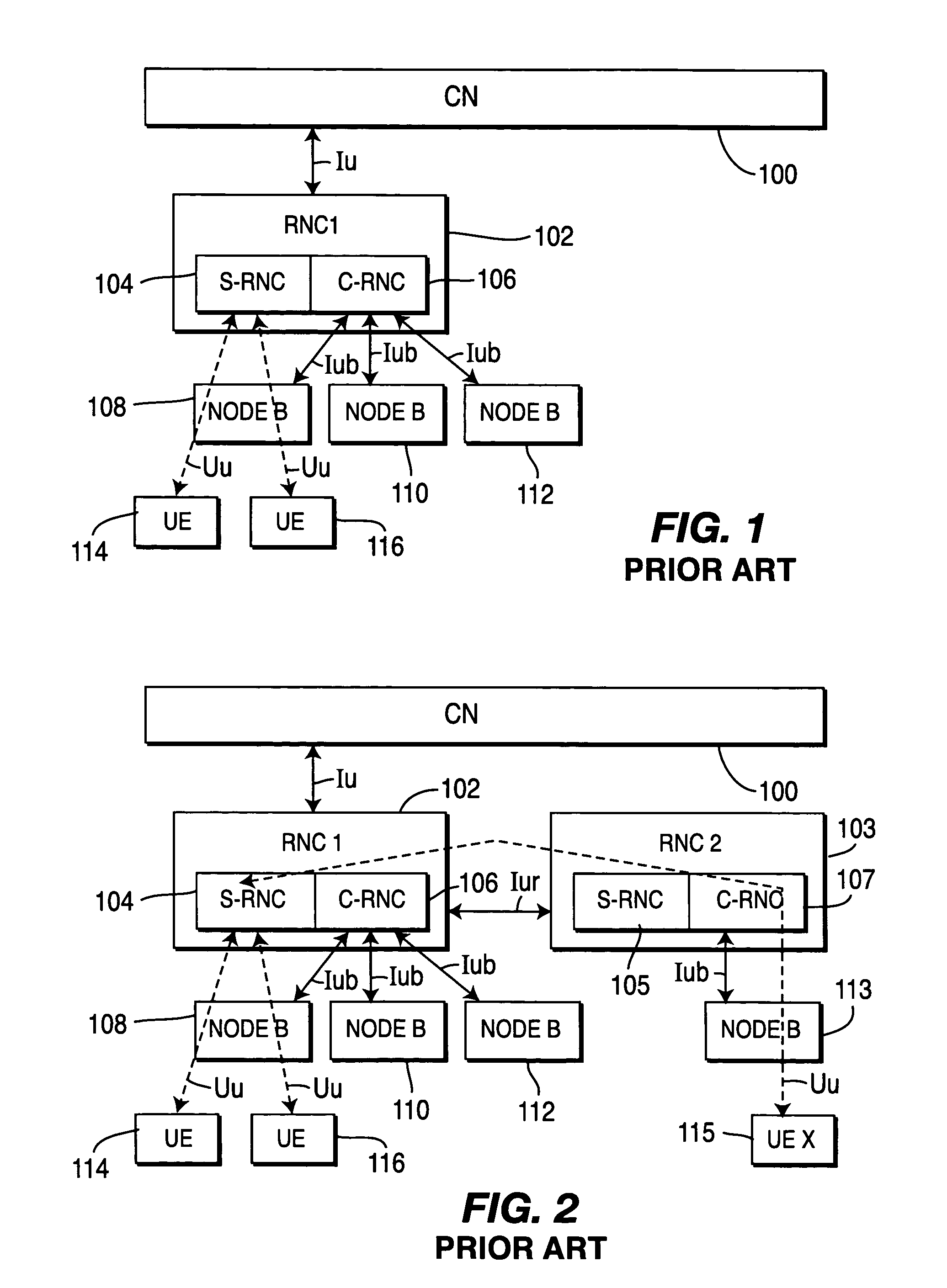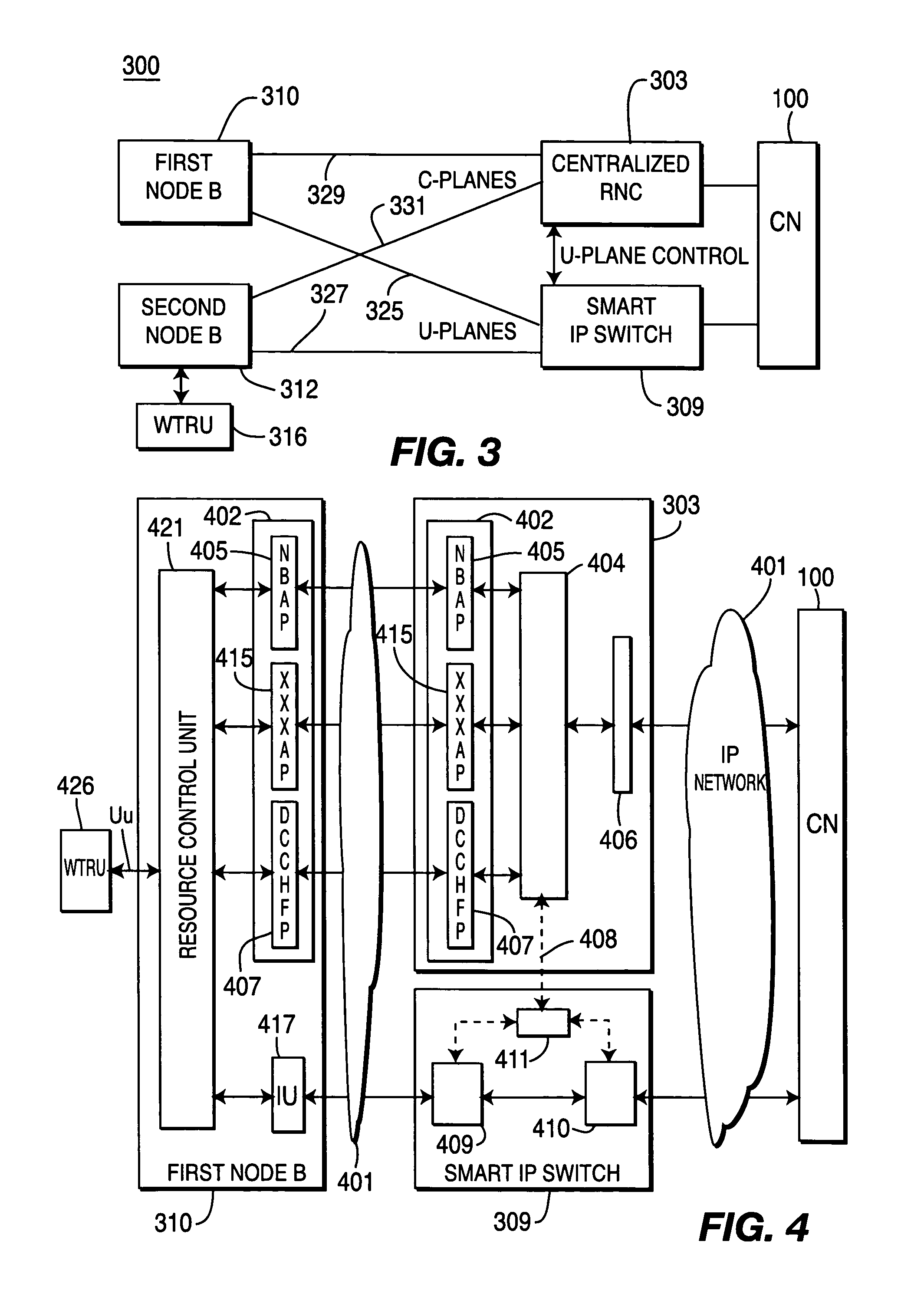Centralized radio network controller
a radio network controller and central control technology, applied in the field of wireless communication systems, can solve the problems of increasing the cost of providing a distributed rnc architecture, not always synchronizing, and expensive hardware elements of rncs, so as to improve the integration with internet protocol (ip) networks, improve the efficiency of processing transmission data, and improve the effect of radio resource managemen
- Summary
- Abstract
- Description
- Claims
- Application Information
AI Technical Summary
Benefits of technology
Problems solved by technology
Method used
Image
Examples
Embodiment Construction
[0023]Hereinafter, the terminology “wireless transmit / receive unit” (WTRU) includes but is not limited to a user equipment, mobile station, fixed or mobile subscriber unit, pager or any other type of device capable of operating in a wireless environment. In CDMA systems specified by the Third Generation Partnership Project (3GPP), base stations are called Node Bs and subscriber units are called User Equipment (UEs). When referred to hereinafter, the terminology “base station” includes but is not limited to a Node-B, site controller, access point or other interfacing device in a wireless environment.
[0024]In accordance with the present invention, transmission data is more efficiently processed, RRM performance is improved, and integration with IP networks is improved by separating user data from connection management and control data, (hereinafter, “control data”). The user data is routed to a smart IP switch, whereas the connection management and control data is routed to a centrali...
PUM
 Login to View More
Login to View More Abstract
Description
Claims
Application Information
 Login to View More
Login to View More - R&D
- Intellectual Property
- Life Sciences
- Materials
- Tech Scout
- Unparalleled Data Quality
- Higher Quality Content
- 60% Fewer Hallucinations
Browse by: Latest US Patents, China's latest patents, Technical Efficacy Thesaurus, Application Domain, Technology Topic, Popular Technical Reports.
© 2025 PatSnap. All rights reserved.Legal|Privacy policy|Modern Slavery Act Transparency Statement|Sitemap|About US| Contact US: help@patsnap.com



